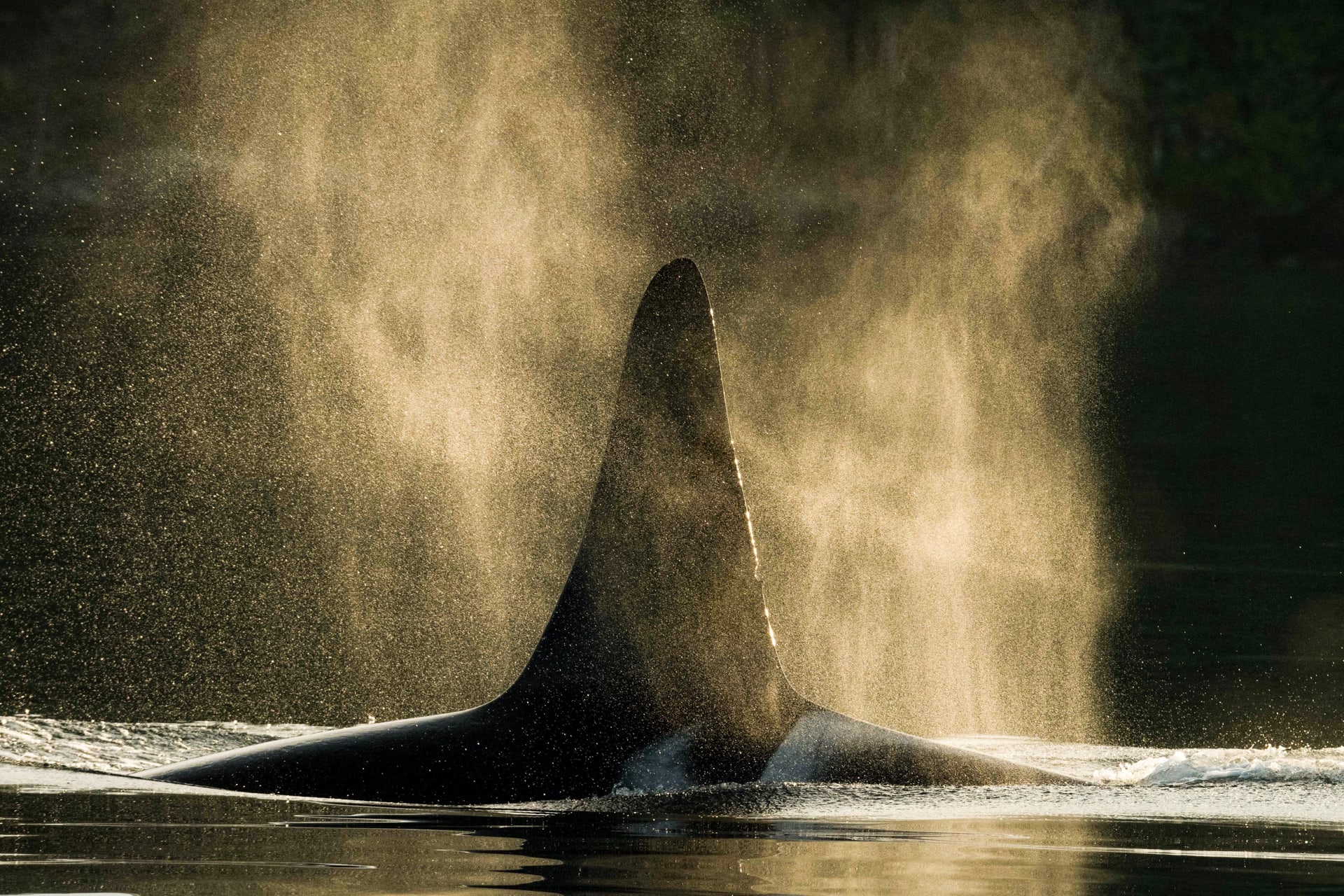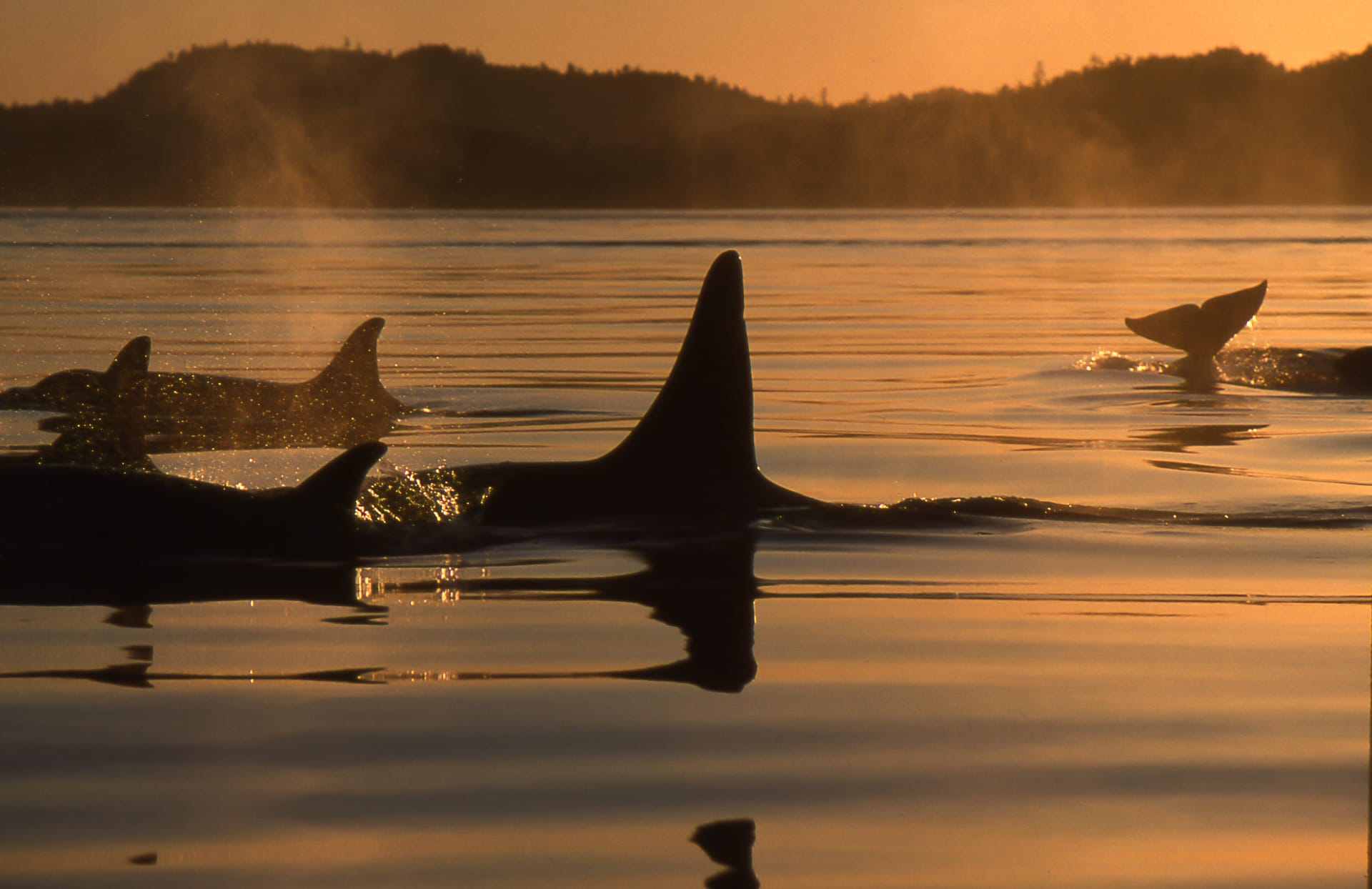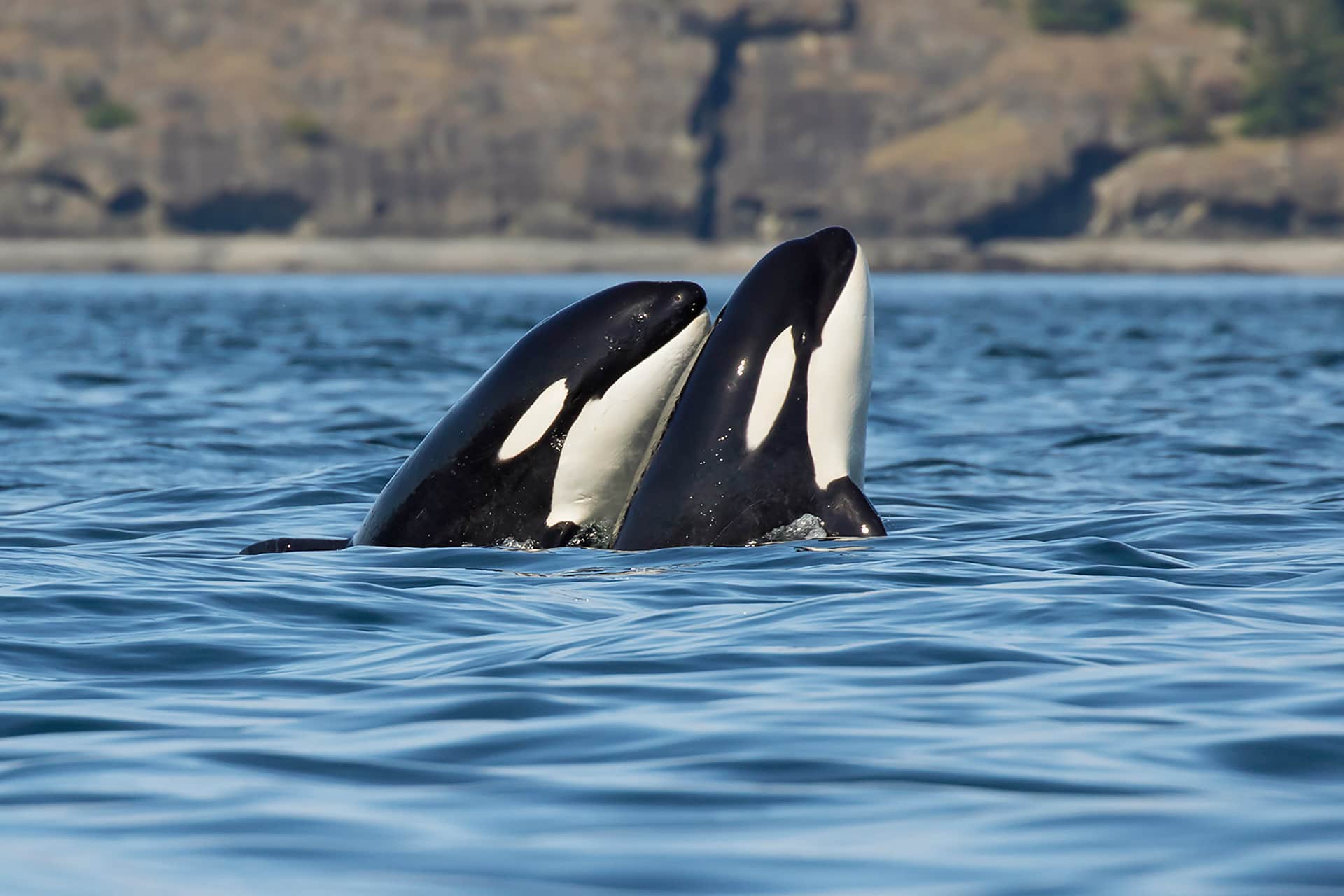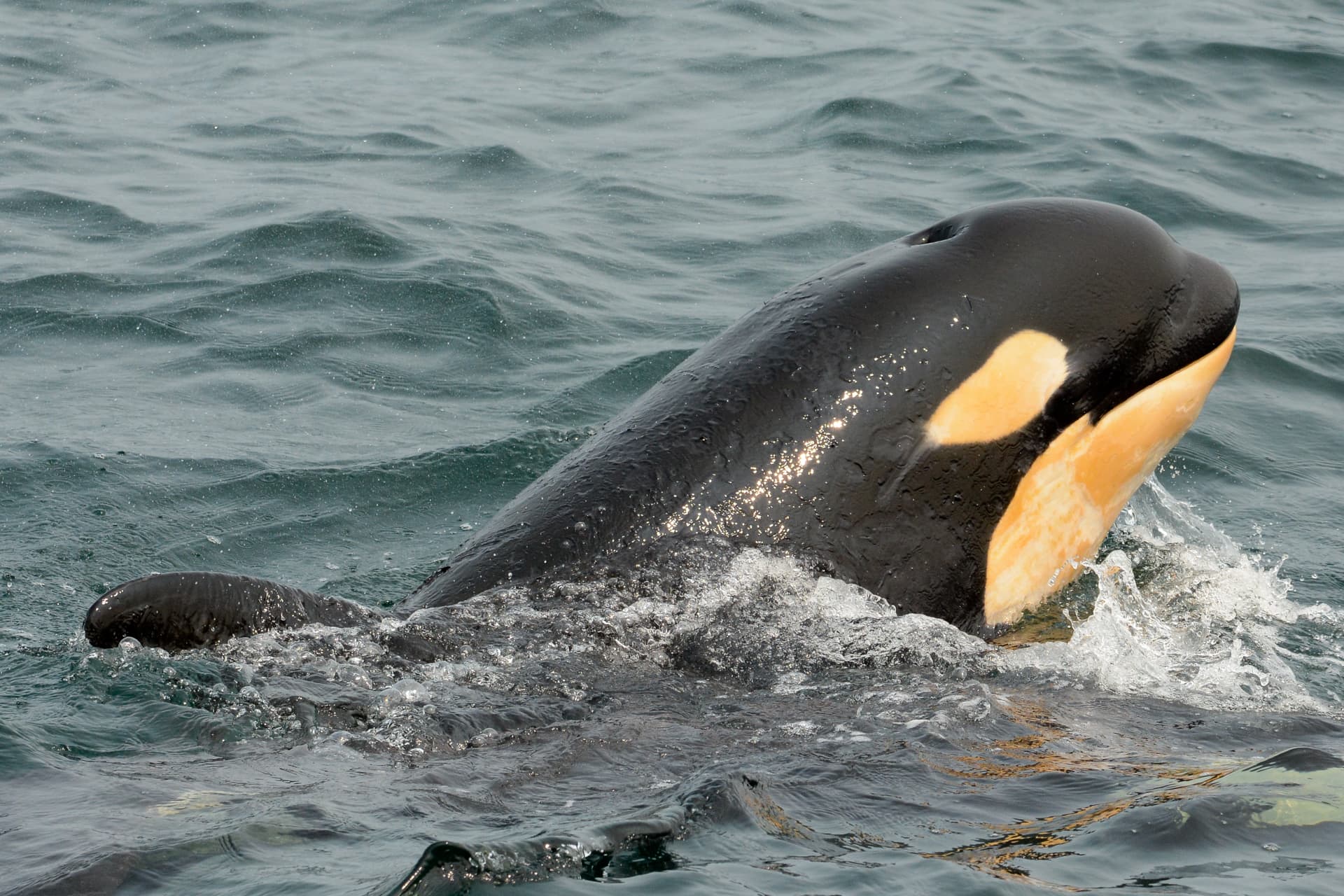
The population of the endangered Southern Resident killer whales has been on a downward trajectory since the 1990s. While this is driven in part by the loss of adults—including some overly premature deaths—the main cause of decline is the lack of successful births.
The Southern Resident’s birth rate is significantly lower than that of their Northern and Southeast Alaska Resident cousins. Numerous theories have been offered, but research from the University of Washington’s Dr. Wasser, with our own Dr. Giles as co-author, revealed that a staggering number—up to 69%—of Southern Resident killer whale pregnancies fail.
Of great concern is the number of calves lost late into the pregnancy, when the risk to the mother is highest. In 2014, this was catastrophically demonstrated when J32 Rhapsody’s near full-term female calf died in the womb, but did not spontaneously abort, causing sepsis and the untimely death of her 18 year-old mother.
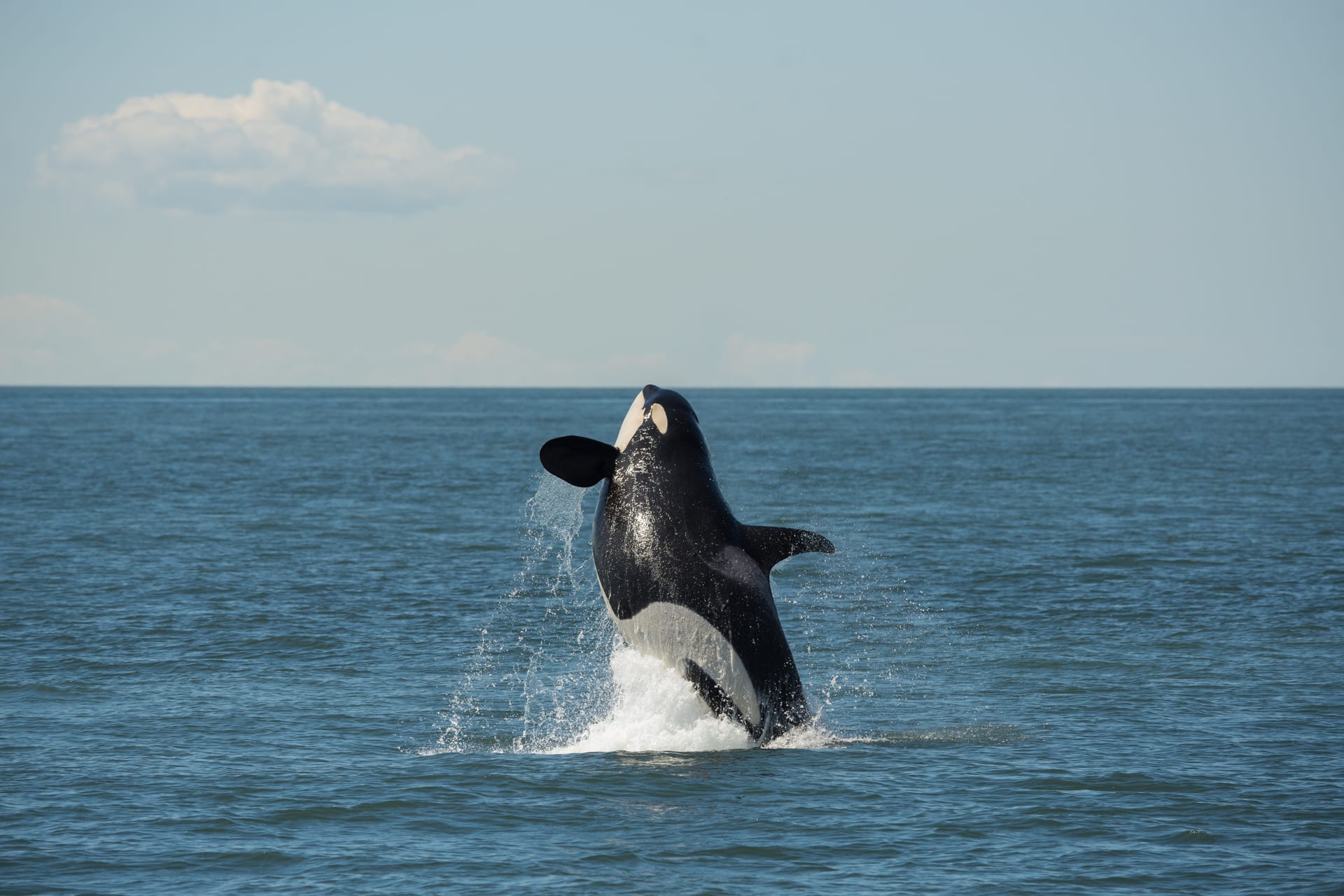
J32 breaches during during pregnancy.
The University of Washington has been monitoring the health of this endangered population since 2007 with the aid of scent detection dogs, whose keen noses can track whale feces from a distance of up to one nautical mile, ensuring the boat arrives in time to collect a sample for analysis before it sinks.
Fecal samples collected between 2008 and 2014 were analyzed to measure levels of progesterone and testosterone, both of which increase during pregnancy. In fact, in later stages, a pregnant killer whale’s level of testosterone is as high as that of an adult male! Therefore testosterone levels enable researchers to distinguish between early pregnancies, from 2 to 9 months, and late stage all the way up to 18 months.
From 348 fecal samples, 35 pregnancies were detected. Of these, only 12 resulted in sightings of a live calf, although sadly one of these—the calf of J28 Polaris—died almost immediately after birth. So this means that 24 pregnancies—that is 69%—were unsuccessful. Of these, 16 were lost during the first 9 months of pregnancy, however that leaves eight calves who died in the much later stages, likely including others dying immediately prior to, at, or shortly after birth, like J28’s calf.
On these late-term losses the study’s authors note that, “although the negative effect on population growth is roughly the same [as early losses], infection from a failed or incomplete abortion likely poses a greater risk of removing a reproductive female from the breeding population.”
These losses also seemingly take a psychological—as well as physiological—toll on these mothers, never more clearly demonstrated than J35 Tahlequah’s 2018 “tour of grief” when she carried her daughter—who sadly died within hours of birth—a thousand miles over 17 days.
J35, Tahlequah, pushed her dead calf for 17 days.
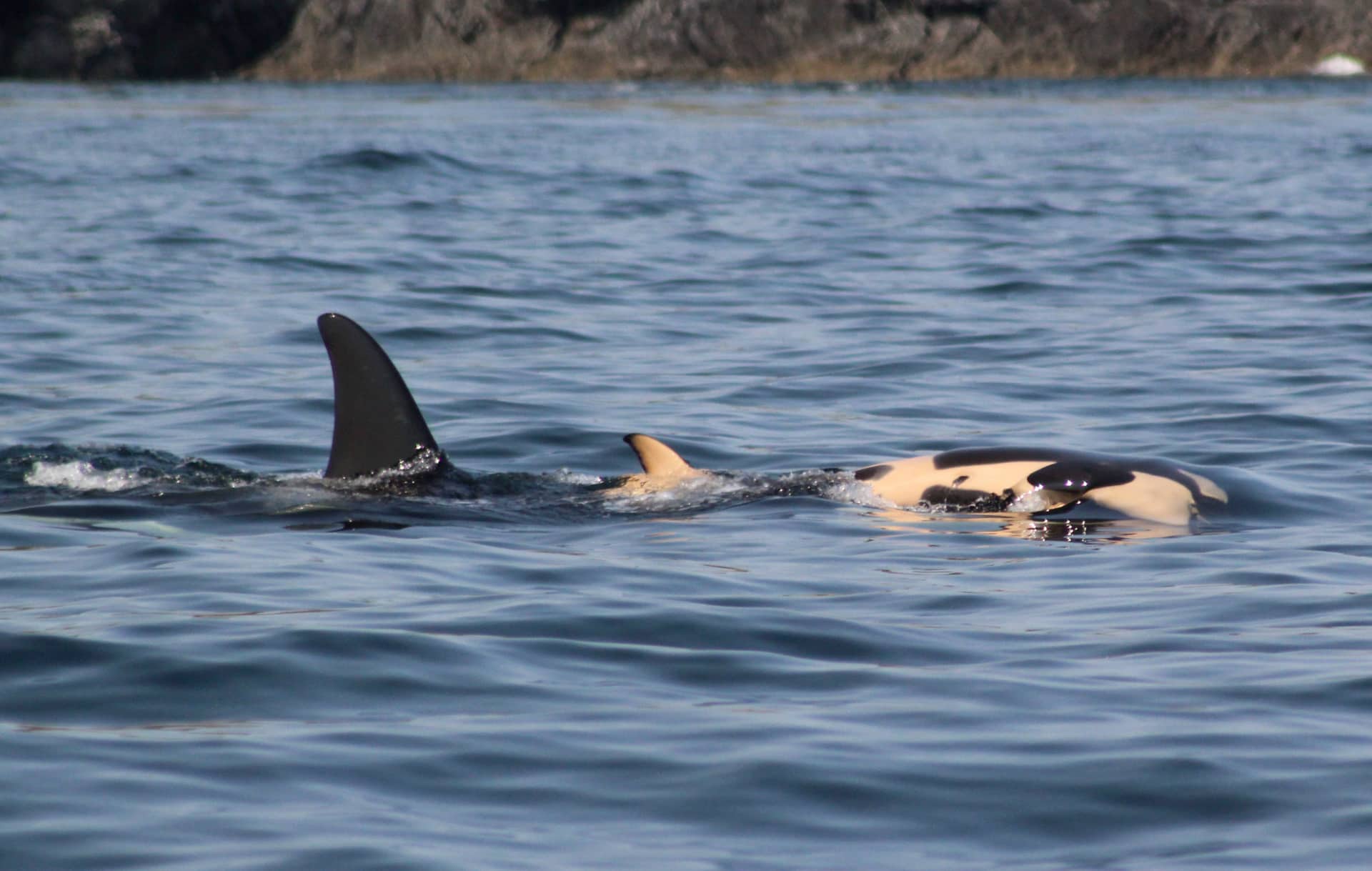
Fecal samples contain two other important hormones: glucocorticoid and thyroid. These work together to ensure the body has enough energy for maintaining body temperature, as well as being important for growth. Lower levels can indicate stress, including nutritional stress due to food shortages, and indeed thyroid hormones have been shown to be lower in failed pregnancies than in successful ones.
Earlier studies revealed that the Southern Residents’ stress hormones were at “healthier” levels in early May, likely after foraging on early spring Columbia River Chinook, a population with a high fat content due to a long migration. Previously this sustained these whales until the mid-August peak of Fraser River Chinook. However, both sadly are now much less reliable food sources.
Continued below...
In 2021, NOAA Fisheries’ diet study showed over half the Chinook, analyzed from feces or prey remains, were of Columbia River origin. Yet several populations are threatened with extinction, including the lower Columbia spring Chinook. The decline of these west coast native Chinook populations is clearly mirrored in the poor reproductive success of the Southern Residents. Such a prolonged gestation period, coupled with needing good nutrition in the months prior to becoming pregnant, simply intensifies the imperative for reliable year-round food sources.
The study’s authors believe their results suggest that to increase calf survival, “recovering Fraser River and Columbia River Chinook should be amongst the highest priorities for managers aiming to recover this endangered population.”
In 2022, Wild Orca will continue this important health monitoring by collecting fecal samples with the help of Eba, our specially trained scent detection dog, guided by Dr. Giles’ many years of experience. Tracking and notifying authorities about new and ongoing pregnancies is one of our priorities.
These samples are a treasure trove of information and have shown to be reliable indicators of killer whale health. By monitoring hormones, we can rapidly assess any actions fisheries managers take to increase Chinook for these whales’ benefit.
With your help, we can keep our finger on the pulse of this endangered population and provide the evidence needed to advocate for change necessary to support healthy pregnancies, essential for this community’s survival.




